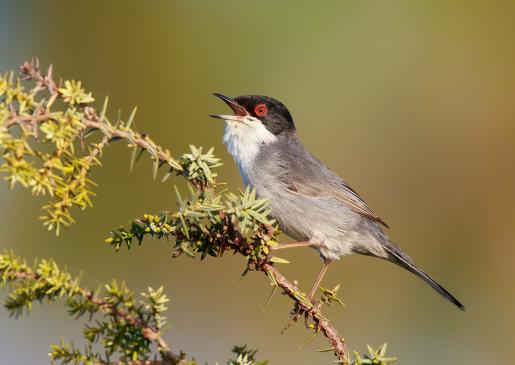Identification
It is one of the larger species of warblers and has a generally greyish appearance: grey above and whitish below, with a brownish tinge on the ribs and dark spots on the wings below the tail. It has a very distinctive "hood" on its head that is black in the adult male and grey in the female with a black tint only around the ears. The colour of the iris of the eye in adult individuals is white, while the beak (which looks relatively heavy for a warbler) and legs are dark grey or crimson to black.
Distribution - Habitat
It is a summer visitor to our region as part of a discontinuous distribution spreading from the Andriatic coast, the Balkan Peninsula, Turkey, Iraq, Iran, Pakistan, Afghanistan and north to Kazakhstan. It winters in the eastern sub-Saharan region, parts of the southern Arabian Peninsula, west to India.
It is found from sea level (in Europe) to 2,000-3,000m in Asia, in dry/warm areas with tall shrubs or scattered shrubs.
Interesting Information
- It lays 3-6 eggs which are incubated by both parents for about 2 weeks. The chicks stay in the nest for another 5 to 6 days and when they leave the nest the whole family stays together for another 5 to 6 days, so that the hatchlings can be cared for a little longer before they become fully independent.


